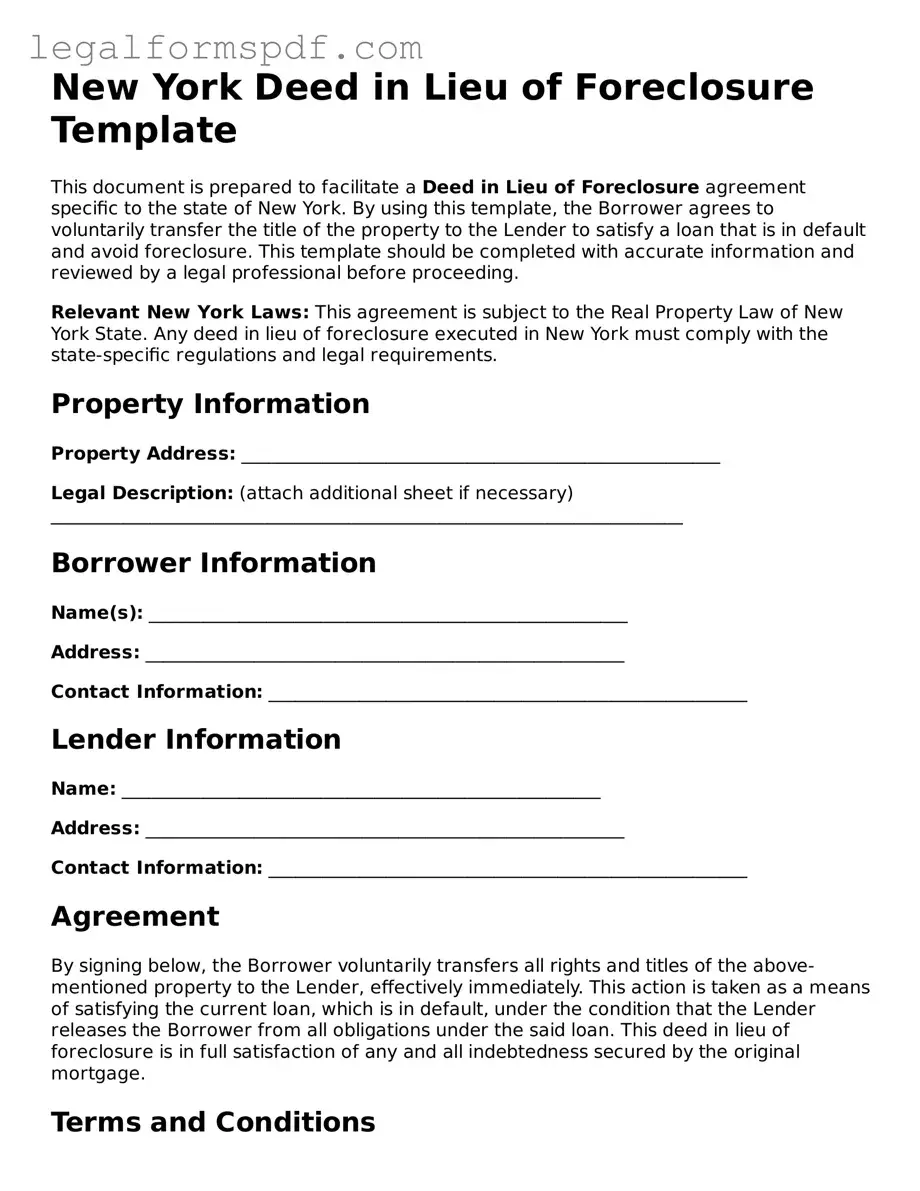New York Deed in Lieu of Foreclosure Template
This document is prepared to facilitate a Deed in Lieu of Foreclosure agreement specific to the state of New York. By using this template, the Borrower agrees to voluntarily transfer the title of the property to the Lender to satisfy a loan that is in default and avoid foreclosure. This template should be completed with accurate information and reviewed by a legal professional before proceeding.
Relevant New York Laws: This agreement is subject to the Real Property Law of New York State. Any deed in lieu of foreclosure executed in New York must comply with the state-specific regulations and legal requirements.
Property Information
Property Address: _____________________________________________________
Legal Description: (attach additional sheet if necessary) ______________________________________________________________________
Borrower Information
Name(s): _____________________________________________________
Address: _____________________________________________________
Contact Information: _____________________________________________________
Lender Information
Name: _____________________________________________________
Address: _____________________________________________________
Contact Information: _____________________________________________________
Agreement
By signing below, the Borrower voluntarily transfers all rights and titles of the above-mentioned property to the Lender, effectively immediately. This action is taken as a means of satisfying the current loan, which is in default, under the condition that the Lender releases the Borrower from all obligations under the said loan. This deed in lieu of foreclosure is in full satisfaction of any and all indebtedness secured by the original mortgage.
Terms and Conditions
Failure by the Borrower to disclose any liens, encumbrances, or other claims on the property not known to the Lender may render this agreement null and void.
The Lender agrees to release the Borrower from all obligations under the loan once the deed in lieu of foreclosure is executed and recorded.
Both parties agree that this agreement is made in good faith and without deceit with the intention to settle the debt.
Signature
Borrower's Signature: ___________________________________ Date: _________
Lender's Signature: _____________________________________ Date: _________
This document is executed on the understanding that it is subject to approval by legal counsels representing both parties and in compliance with applicable New York State laws and regulations.
